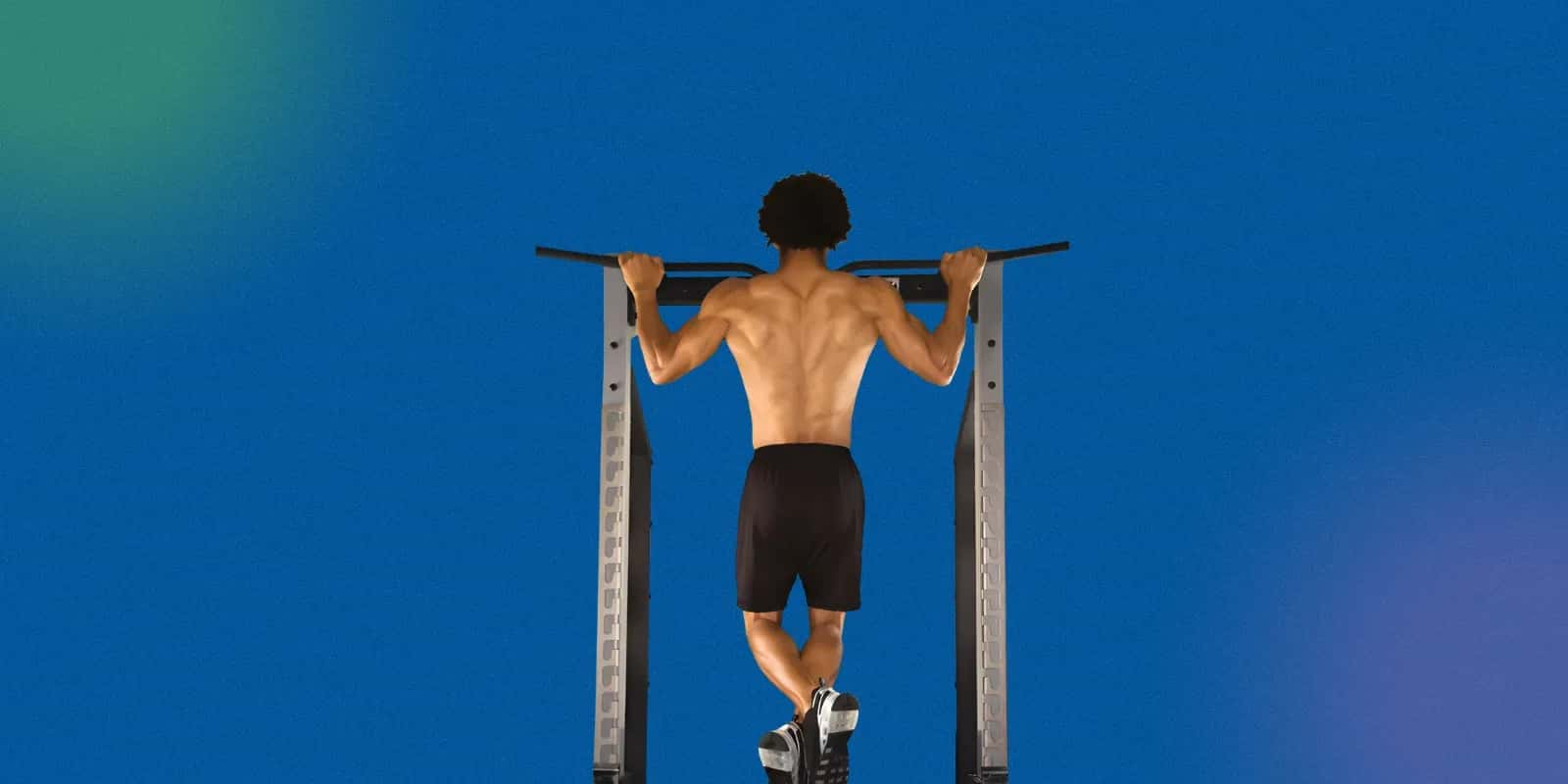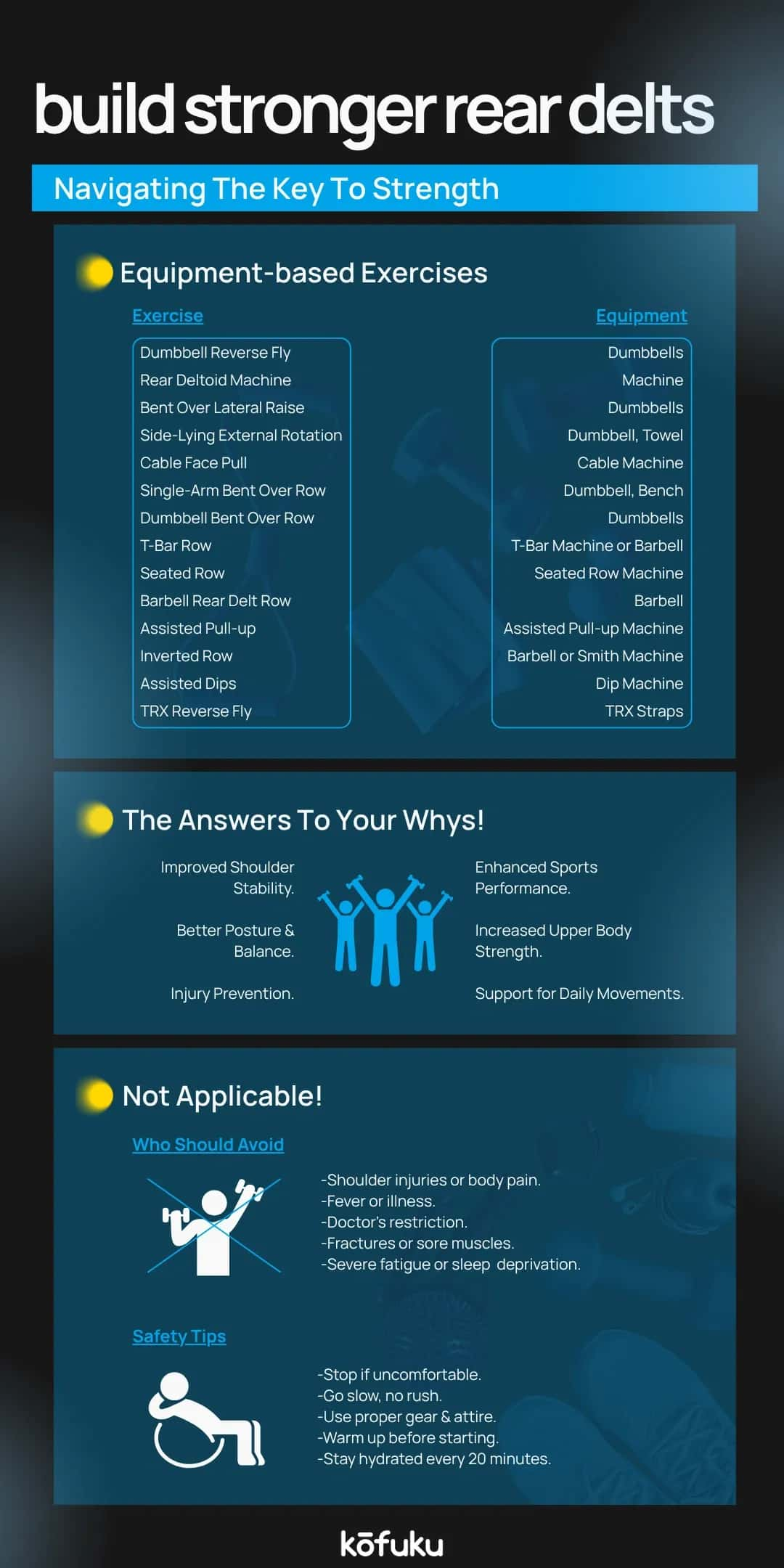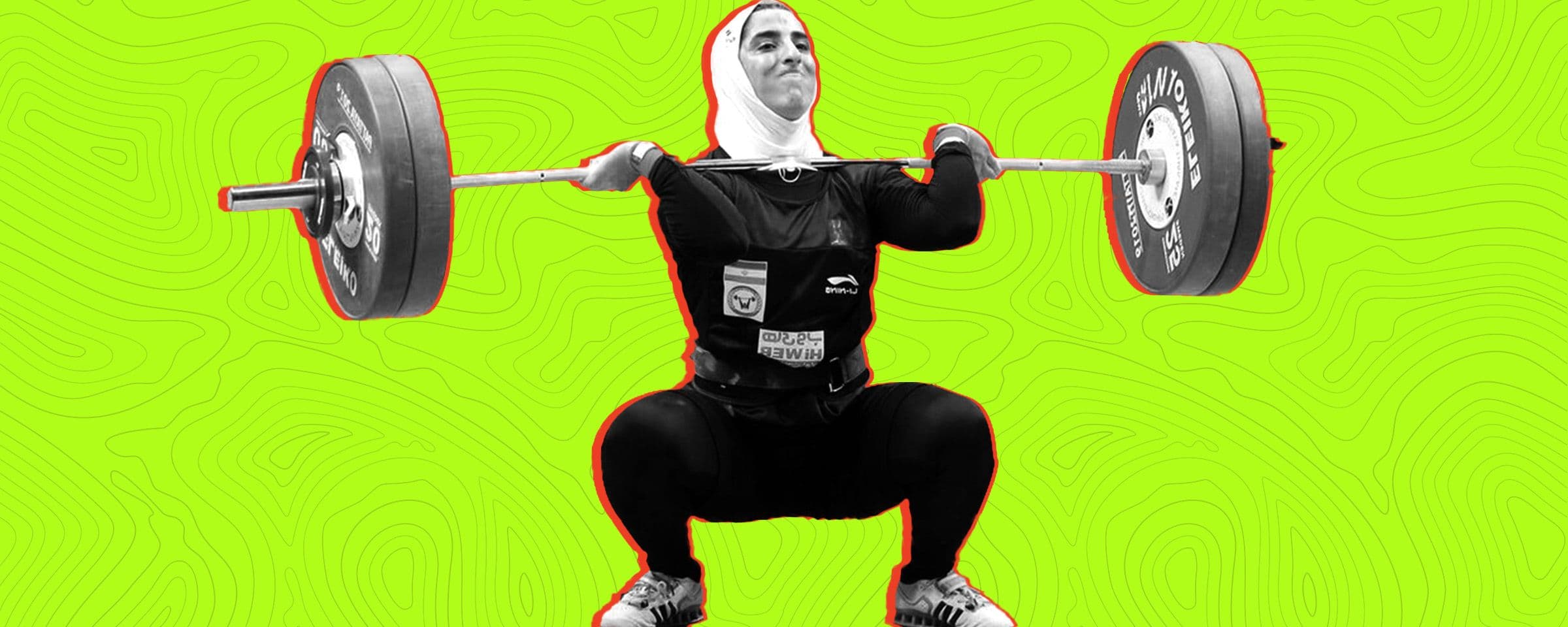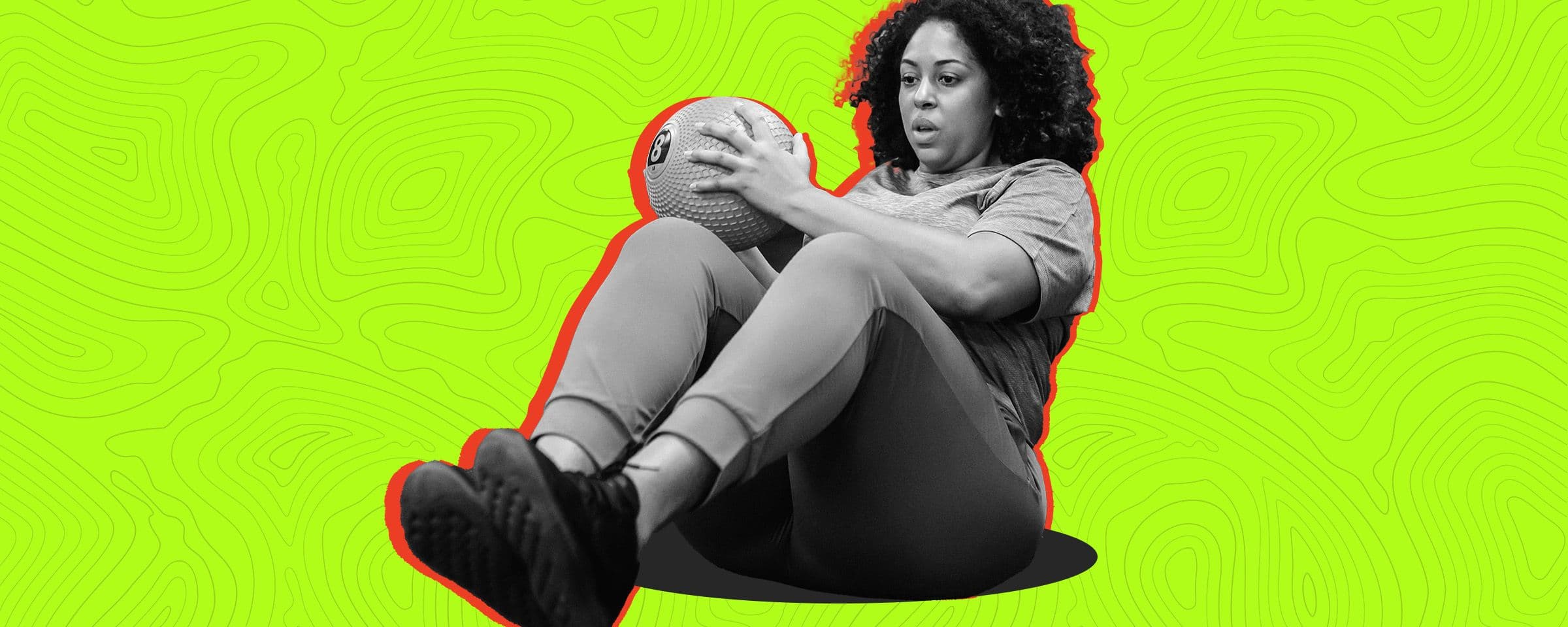6 Exercises to Improve Posterior Deltoid Strength


Introduction
Have you recently joined the gym and want to develop your upper body strength and improve your posture? Then you shouldn’t ignore your rear deltoids! People usually forget to train it and focus purely on the front and side delts.
The rear deltoids, or posterior deltoids, are crucial for balanced shoulders, maintaining proper posture, and preventing injury. They are used in a variety of daily activities, including but not limited to lifting, pulling, and, yes, even carrying groceries!
This article will outline some of the best exercises for the rear deltoids and provide guidance on maximising their effectiveness.
1. Single Arm Bent Over Row
If you're looking for a traditional rear deltoid exercise, you can't go wrong with the single-arm bent-over row. This exercise not only works the rear deltoids but also your rhomboids and trapezius muscles. This exercise is also a perfect way to strengthen your upper back.
How to Do It:
- Pick up a dumbbell with your right hand, and put your left hand and left knee on a bench for support.
- Keep your lower back slightly arched, hinge at the hips, and lower your torso so that it is parallel to the floor.
- Using your shoulder blade, pull the dumbbell into your rib cage, squeezing back and down.
- Adjust the weights according to your comfort and goals, and repeat 10-12 reps per arm.
Benefits:
- It helps build upper back and rear deltoid strength
- Enhances posture
- Corrects side-to-side muscle imbalances
If you're looking to strengthen each side of your body independently, this is one of the best exercises for the rear deltoids.
2. Standing Bent Over Lateral Raise
This is a great exercise for isolating the posterior deltoid muscles. It requires minimal equipment, just the dumbbells you already have, and is easy to follow.
How to Do It:
- Take one dumbbell in each hand and bend your knees slightly.
- Hinge at the hips until your torso is parallel to the ground.
- Bend your elbows slightly, raise the dumbbells out to your sides to your shoulder height.
- Lower your arms back down with control and repeat.
- Do at least three sets of 12-15 reps.
Benefits:
- Isolates rear delts
- Enhances shoulder stability
- Improves shoulder definition
This is a very popular exercise for rear delts among bodybuilders and fitness enthusiasts alike.

3. Cable Machine High Pull with Ropes
The cable machine high pull is a great compound exercise that activates your rear deltoid muscles, traps, and upper back.
How to Do It:
- Attach a rope handle to the pulley on the cable machine and adjust the weight.
- Grab the rope with both hands about shoulder-width and face your palms towards each other.
- Pull the rope towards your face while flaring your elbows out until your hands are in front of your ears.
- Slowly release back to the starting position.
- Aim for 10-12 reps per set.
Benefits:
- Constant tension throughout the entire movement
- Good posture builder
- Reduces shoulder injury risk
Many people argue that this is the best rear delt exercise due to its fluid range of motion.
4. Rear Deltoid Machine
The rear deltoid machine, also known as the reverse pec deck, is an excellent way to isolate the muscles in your rear deltoids if you have access to gym equipment.
How to Do It:
- Sit facing the machine and your chest against the pad.
- Grasp the handles in front of you with your arms extended forward.
- Pull the handles out to the sides and focus on squeezing your shoulder blades together.
- Pause briefly at the top of the contraction for a moment before returning to the start.
- Complete 12-15 reps.
Benefits:
- Isolates the rear delts without too many assisting muscles
- Controlled motion reduces potential injury
- An easy way to adjust the weight being used
If you’re more comfortable with a machine or if you’re a beginner, this machine-based rear deltoid exercise is a good choice for training your upper body.
5. Assisted Pull-Up
The assisted pull-up machine is typically used for building lat muscles, but it also activates the posterior deltoids if you adjust your form slightly.
How to do it:
- The rear deltoids can be worked on an assisted pull-up machine or with resistance bands to stabilise your body weight.
- Grasp the handles slightly outside shoulder width.
- As you pull yourself up, lean slightly backwards to engage your rear delts some more.
- Control your movement and lower yourself back down slowly.
- If you are new to this exercise, aim for eight to 10 reps.
Benefits:
- Works for multiple upper-body muscle groups
- Engages rear delts, lats, and traps
- Builds functional pulling strength
This is a great exercise to work the rear delts, especially if you want to build back strength as well.

6. Side Lying External Rotation
This is a rehabilitation-friendly exercise that targets both the rear deltoid and rotator cuff muscles, providing a comprehensive workout while also promoting joint health improvements and overall injury prevention.
How to Do It:
- Lie on your side and hold a light dumbbell in your upper hand.
- Your upper arm and shoulder should remain tight against your body as you bend your elbow to 90 degrees.
- From here, move your arm outward while staying perpendicular to your body. Lift the dumbbell as high as you can without moving your upper arm or shoulder.
- Slowly return your arm to the starting position before repeating. Aim for 15-20 reps on each side.
Benefits:
- Strengthens rear delts and rotator cuff
- Provides shoulder mobility
- Perfect for beginners and those trying to bounce back from an injury
This easy move is often used by physical therapists. Its easy movement can be generally paired well with other exercises that strengthen the rear deltoids.
Key Points to Remember
- Focus on form, not weight.
- Perform the exercises slowly and with controlled movements.
- Use lighter weights for isolated movements such as external rotations.
- Combine these movements with chest and front delts for a complete shoulder workout.
Having strong rear delts will not only enhance your appearance but also help smooth your movements and make you feel stronger in everyday life.
The Bottom Line
Targeting your rear deltoids is not just for developing broader shoulders; it’s also crucial for injury prevention, improving posture, and achieving upper-body muscle balance.
If you don’t target these muscles, you risk creating imbalances that can eventually lead to pain or discomfort, which can become chronic over time.
By incorporating these six practical and effective exercises into your workout, you will not only define your rear delts but also strengthen them through the use of dumbbell exercises, machine exercises, and cable exercises.
Whether you're looking for the best exercises for rear delts to improve your gains or want to mitigate the risk of injury, these exercises are an excellent option to add to your rehabilitation or fitness programme.

FAQs
Q. Why are rear delts important for shoulder health?
A. The rear delts play a vital role in maintaining shoulder health by providing the necessary balance for the shoulder joint. It also enables counteraction of the forward pull motion of your chest muscles.
This further helps to decrease the chances of shoulder injuries and enhances shoulder functioning.
Q. What are the top exercises to strengthen rear delts?
A. Best exercises for strengthening rear delts include:
- Bent-over rear delt fly
- Dumbbell reverse fly
- Reverse fly machine
- Incline Dumbbell reverse fly
- Seated rear delt fly
- Cable reverse fly
- Standing rear delt
Q. How often should I train my rear deltoids?
A. It is crucial to train your rear deltoids 1 to 2 times a week. It enables proper recovery time between the sessions. If you train your rear deltoids frequently, it can cause injuries, whereas undertraining will not lead to better strength results.
Q. Can weak rear delts cause shoulder pain?
A. Yes, weak rear delts lead to shoulder pain as well as injuries. Rear delts are typically underdeveloped, which can lead to unstable shoulder joints, resulting in poor posture, muscle imbalances, and stress on the shoulder joints. It further leads to pain and inflammation, like rotator cuff strains.
Q. Are rear delt exercises suitable for beginners?
A. Yes, even a beginner can perform rear delt exercises, but it should be adjusted as per their goals and fitness. You must begin with light weights and aim for proper techniques.
Beginners can opt for exercises like the seated rear delt fly or the bent-over rear delt fly because they are comparatively simple to perform.

Debunking the Weightlifting Myth – Truth Revealed

Park Gym Equipment: Outdoor Fitness Machines for Public Spaces & Gardens

Six Natural Pre-Workout Drinks For Better Performance

30 Effective Kettlebell Exercises for Every Workout

Intense Workouts: Common Myths and the Real Facts

The Ultimate Guide to Good Pre-Workout Supplements

What To Eat Before And After A Workout?

